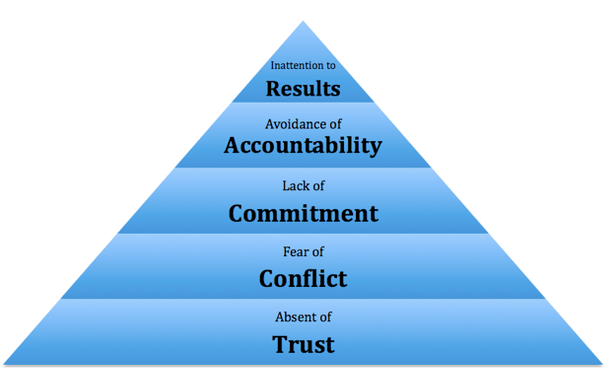
Few if any leaders wake up in the morning saying “I’m going to create a really dysfunctional leadership team this week.” But how many of us are purposeful in creating cohesive and effective leadership teams? In The Five Dysfunctions of a Team, Patrick Lencioni identifies a hierarchy of problems inherent in many teams that will erode trust, cohesion, and organizational results:

These common characteristics are written in negative terms because dysfunctional teams are all too common when leaders fail to be purposeful in developing the right relationships, climate, and expectations with their team. However, looking at the same phrases with a slightly different focus reveals the ingredients to successful teamwork in organizations:

Building trust by assuming good intentions is the foundational element for effective teamwork. With that foundation in place, leaders and teams learn to embrace productive conflict rather than to fear and avoid it. Conflict becomes a normal process where ideas are professionally expressed and heard, debates are held, data are reviewed, and the team ultimately agrees on a common approach. That process builds commitment to the plan and the related work that must be completed. When the full team is involved and invested, individual and collective accountability comes next. “We believe in our mission and have simply worked too hard to fail!” Finally, all members of the team ultimately realize that their collective work must yield the intended results, or another data-based approach must be tried. Consider implementing this approach with a team you lead. Perhaps even do a group book study on The Five Dysfunctions of a Team to get started.

